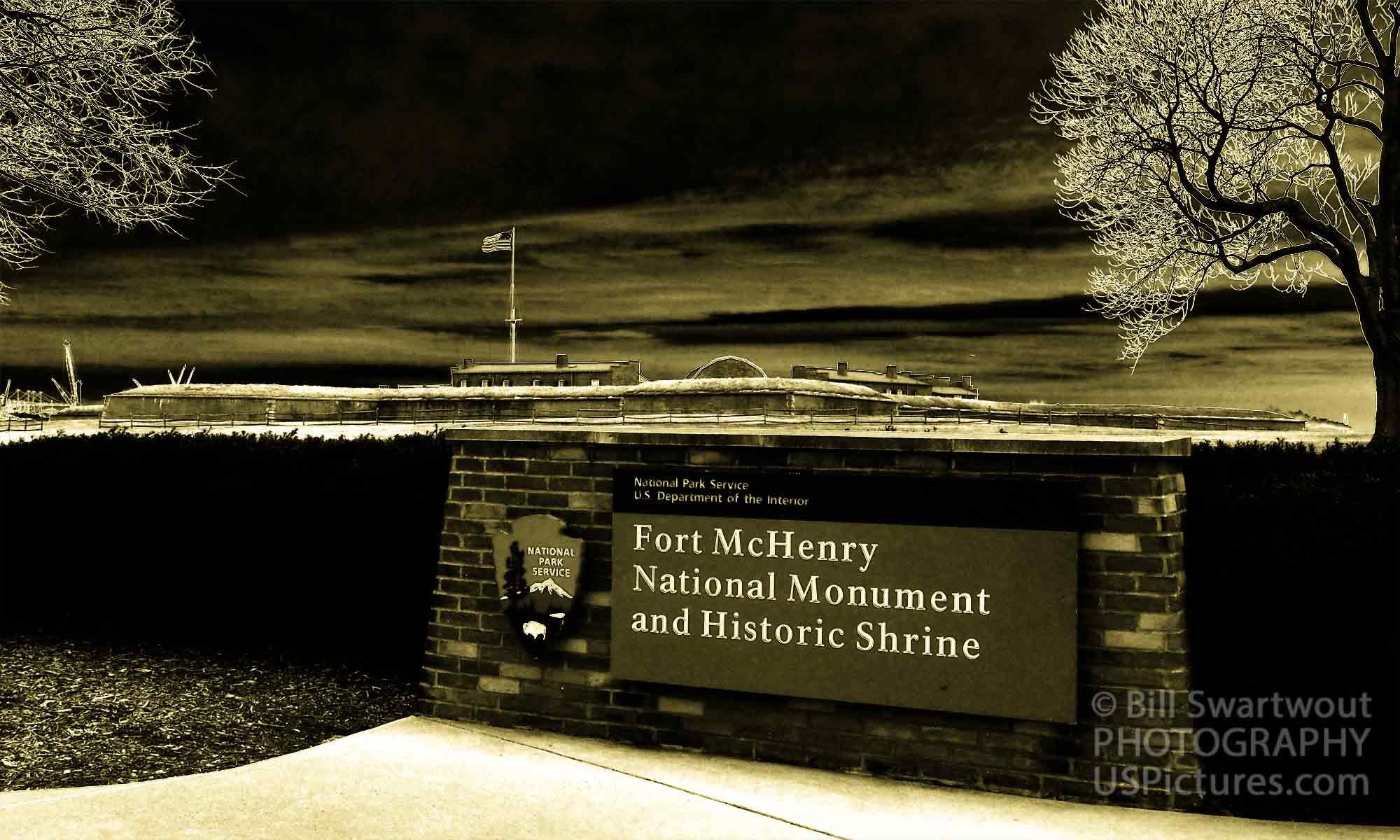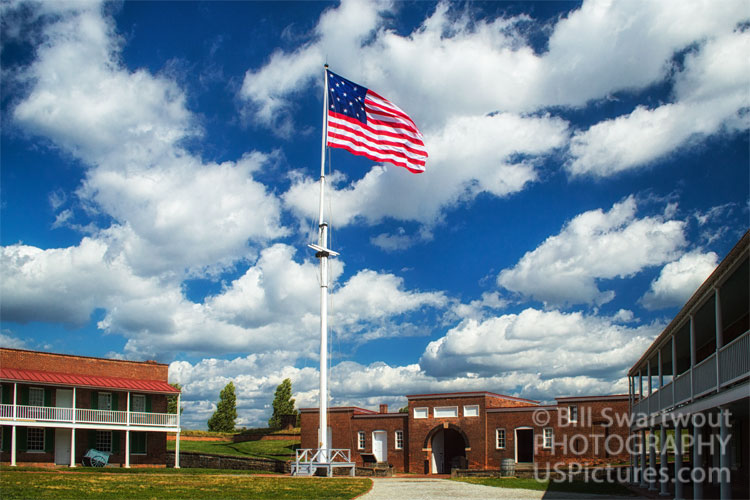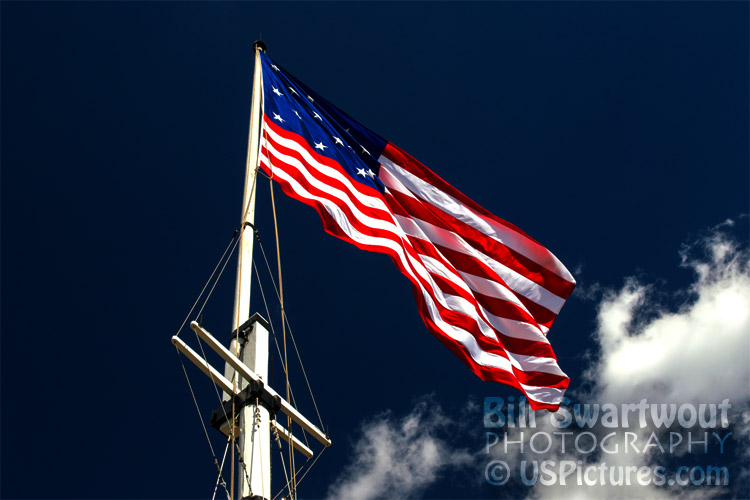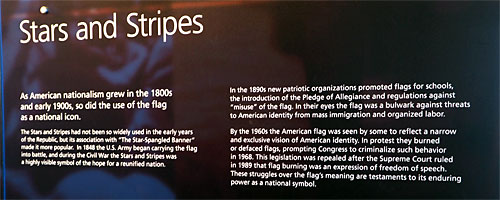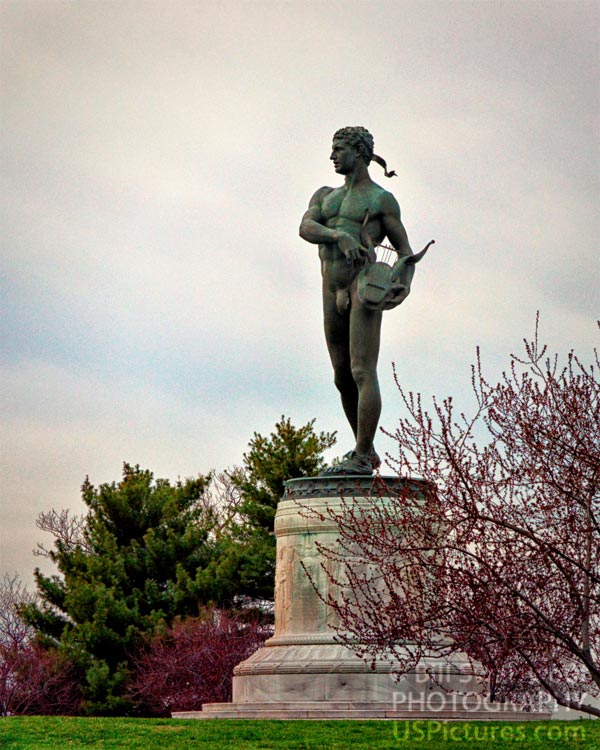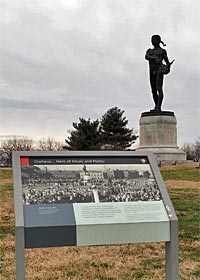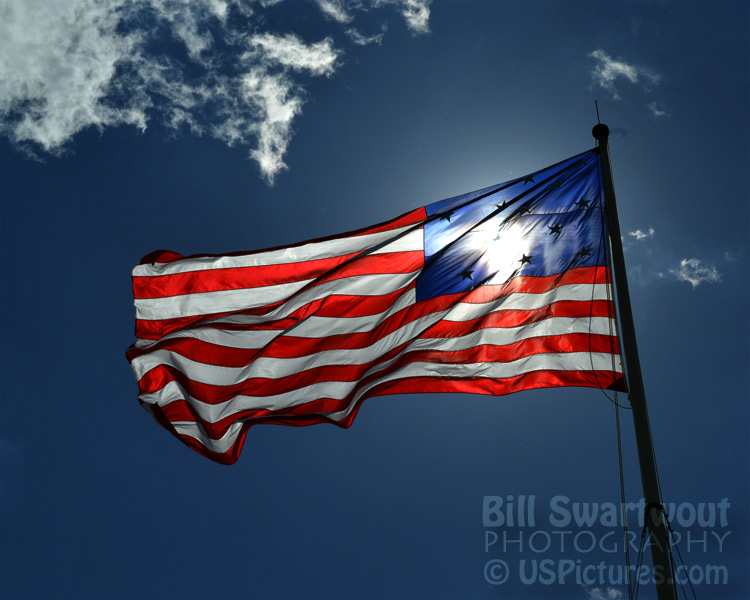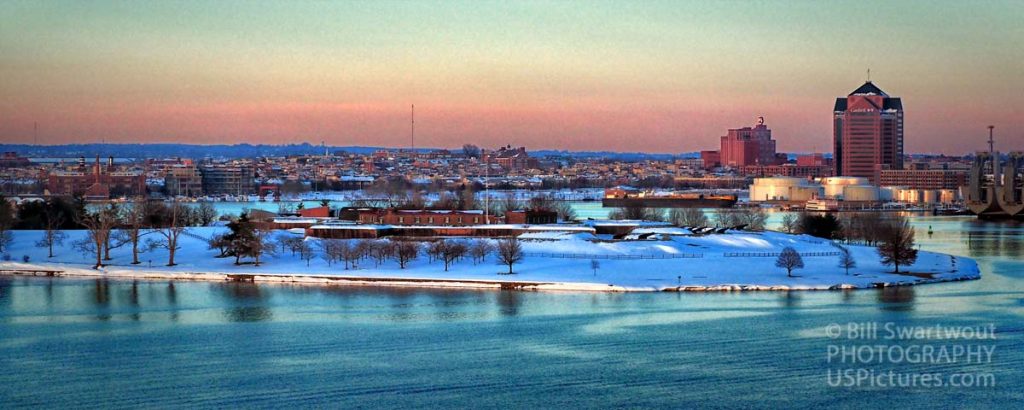The Stars & Stripes fly over the Parade Ground
Once hoisted as an act of defiance and a symbol perseverance, the American Flag flew over Fort McHenry at the conclusion of the Battle of Baltimore.
At the base of the [newly donated replica] flag mast near the entrance to the Interior Parade Ground of Fort McHenry is a placard with the following description:
In Full Glory Reflected
9:00 a.m., September 1814
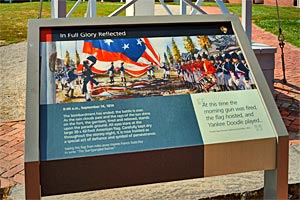 The bombardment has ended; the battle is over. As the rain clouds pass and the rays of the sun shine on the fort, the garrison, tired and relieved, stands upon the parade ground. All eyes stare at the large 30 x 42 foot American flag. Carefully kept dry throughout the stormy night, it is now hoisted as a special act of defiance and symbol of perseverance.
The bombardment has ended; the battle is over. As the rain clouds pass and the rays of the sun shine on the fort, the garrison, tired and relieved, stands upon the parade ground. All eyes stare at the large 30 x 42 foot American flag. Carefully kept dry throughout the stormy night, it is now hoisted as a special act of defiance and symbol of perseverance.
Seeing this flag from several miles away inspires Francis Scott Key to write “The Star Spangled Banner”.
“At this time the morning gun was fired, the flag hoisted, and Yankee Doodle played…
Private Isaac Munroe, Baltimore Fencibles, 1814.”
For this and other fine art photographs of Fort McHenry click Bill Swartwout Photography.
